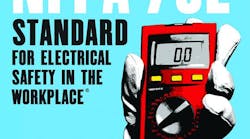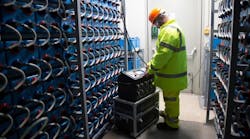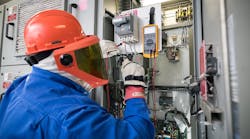Nearly half of the text of NFPA 70E consists of “Informative Annexes” (40 pages). These Annexes aren’t informative in the “Just FYI” sense. They are a gold mine of useful information. There are 16 of them (A through P). Here’s an overview of the first four:
- Annex A — The bibliography of documents referenced by requirements in the standard. One way this is helpful is that you can go to the background source of a particular requirement for more detailed information.
- Annex B — Additional references, not part of the requirements in the standard. One way this is helpful is that you can dig deeper into a particular safety issue by locating relevant standards and other publications.
- Annex C — An explanation of how to determine the limits of approach to the arc flash boundary. It includes a helpful illustration.
- Annex D — An explanation of methods for calculating the incident energy and arc flash boundary. It includes five tables, an illustration, and a large number of equations and examples.




